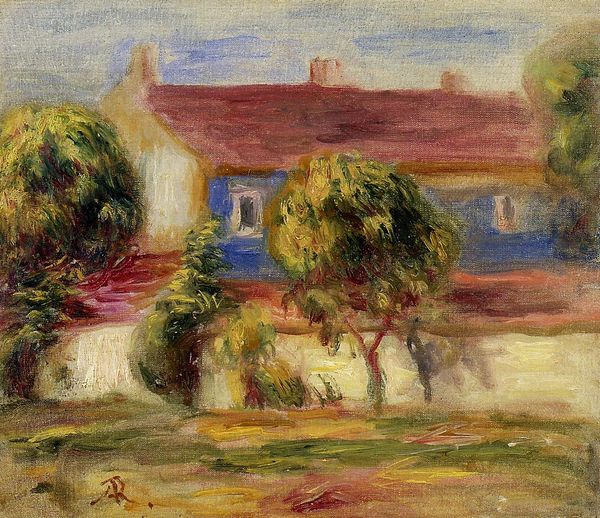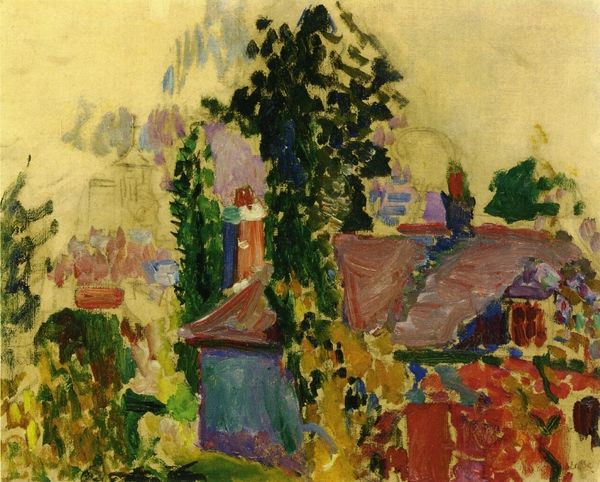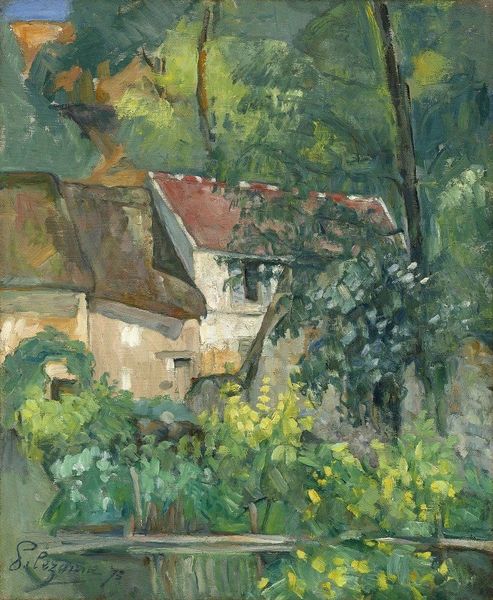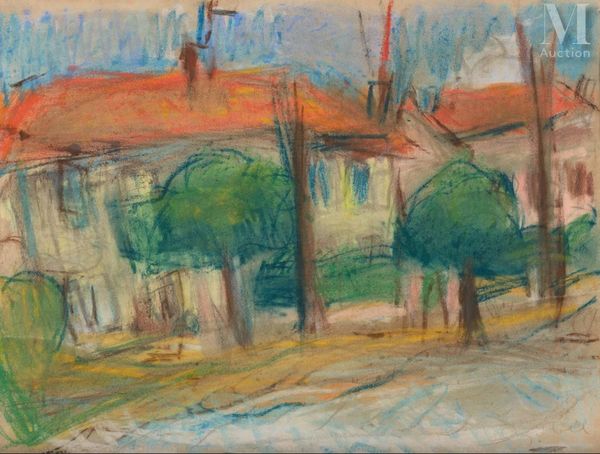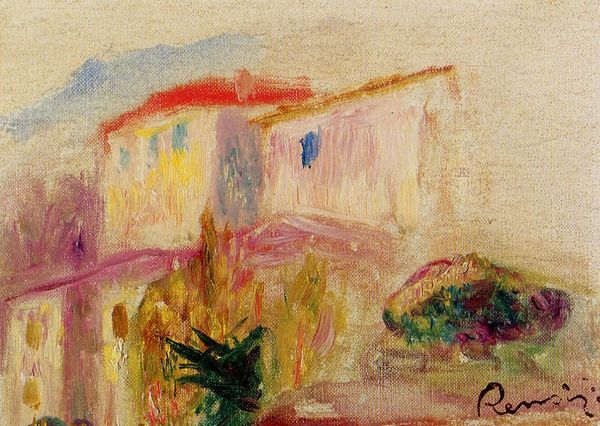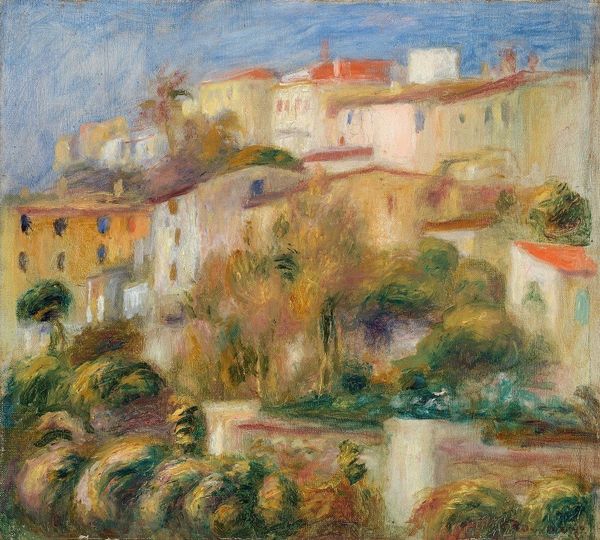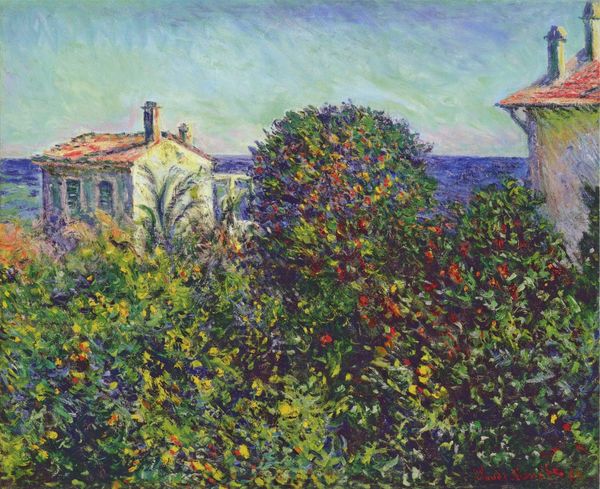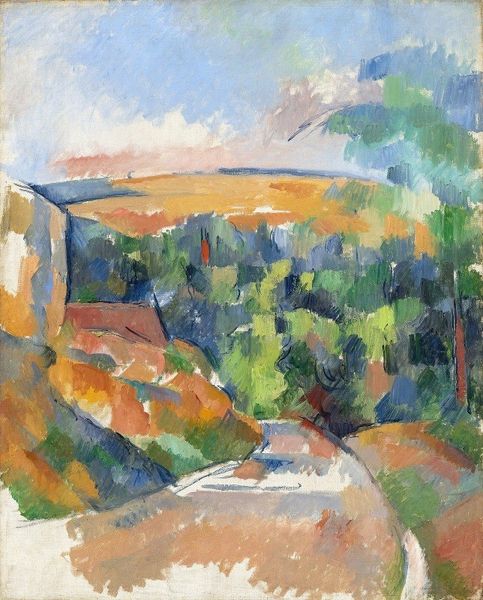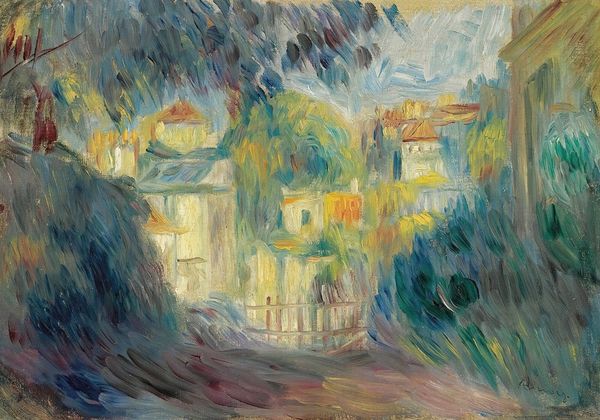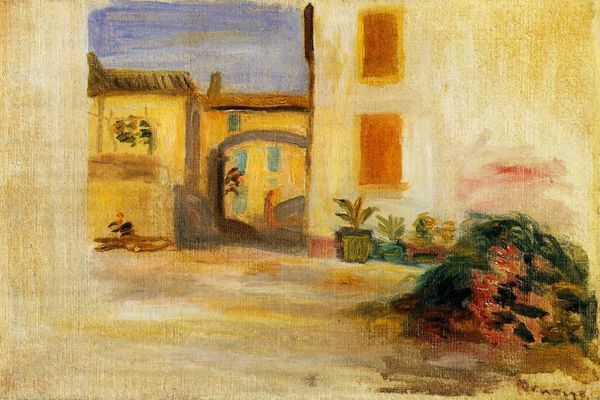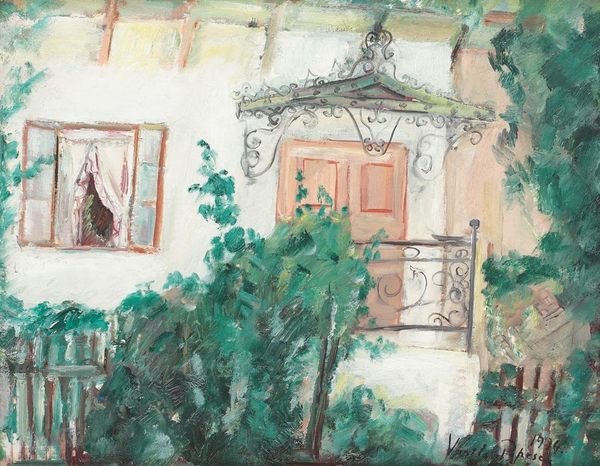
painting, plein-air, oil-paint
#
painting
#
impressionism
#
plein-air
#
oil-paint
#
landscape
#
impressionist landscape
#
oil painting
#
cityscape
Copyright: Public domain
Pierre-Auguste Renoir painted "House at Cagnes" with oil on canvas. The composition appears as a tapestry of soft-edged forms. The ochre and muted pink hues evoke a serene, sun-drenched atmosphere, creating a sensory experience. The forms are constructed with small brushstrokes in a mosaic-like fashion. Renoir uses light and color to dissolve the clear distinction between objects and their surroundings. The houses and foliage blend together, challenging traditional notions of space and perspective. He seems interested in capturing the transient effects of light. Considering Renoir's place in Impressionism, we can see his engagement with capturing fleeting moments and subjective experience. But his approach also anticipates later artistic explorations into abstraction. Renoir destabilizes the conventional representation of form, opening the way for new modes of artistic expression. Ultimately, in "House at Cagnes," Renoir's manipulation of form invites us to reconsider the boundaries between representation and abstraction, revealing the continuous evolution of artistic language.
Comments
No comments
Be the first to comment and join the conversation on the ultimate creative platform.

